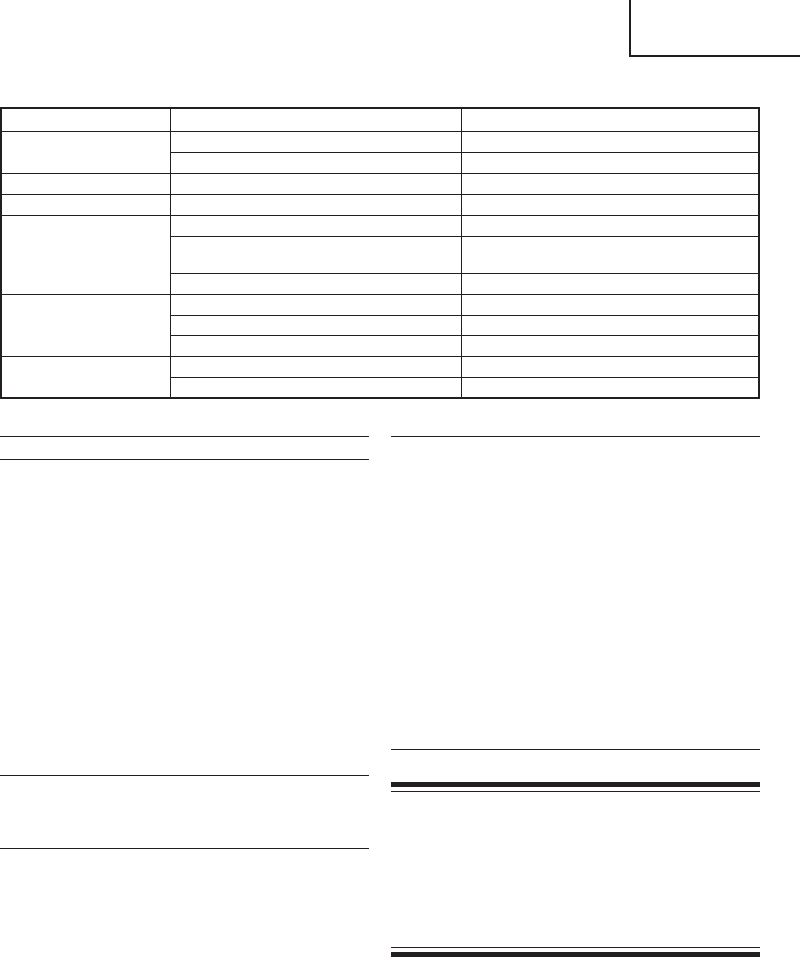
7
English
Table 1 List of Appropriate Blades
Material to be cut Material quality Blade No.
Lumber
General lumber
No.1 or No.31 (thick plate) or No.2 (thin plate)
Plywood No.3 or No.6
Iron plate Mild steel plate No.6
Nonferrous metal Aluminum, copper, brass No.6
Phenol resin, melamine resin, etc. No.4 (thick plate) or No.6 (thin plate)
Synthetic resin
Vinyl chloride, acryl resin, etc.
No.2 or No.4 (thick plate) or No.6
(thin plate)
Foamed styrol, etc. No.2
Pulp
Cardboard, corrugated paper No.2
Hardboard No.5 or No.6
Fiberboard No.6
Others
Hard rubber No.2
Slate No.5
MAINTENANCE AND INSPECTION
1. Inspecting the blade
Continued use of a dull or damaged blade will result
in reduced cutting efficiency and may cause
overloading of the motor. Replace the blade with a
new one as soon as excessive abrasion is noted.
2. Inspecting the mounting screws
Regularly inspect all mounting screws and ensure
that they are properly tightened. Should any of the
screws be loose, retighten them immediately. Failure
to do so could result in serious hazard.
3. Maintenance of the motor
The motor unit winding is the very “heart” of the
power tool. Exercise due care to ensure the winding
does not become damaged and/or wet with oil or
water.
4. Servicing
Consult an authorized Service Agent in the event of
power tool failure.
NOTE
Due to HITACHI’s continuing program of research and
development, the specifications herein are subject to
change without prior notice.
IMPORTANT
Correct connection of the plug
The wires of the main lead are coloured in accordance
with the following code:
Blue : –Neutral
Brown : –Live
As the colours of the wires in the main lead of this tool
may not correspond with the coloured markings
identifying the terminals in your plug proceed as follows:
The wire coloured blue must be connected to the terminal
marked with the letter N or coloured black. The wire
coloured brown must be connected to the terminal
marked with the letter L or coloured red. Neither core
must be connected to the earth terminal.
NOTE
This requirement is provided according to BRITISH
STANDARD 2769: 1984
Therefore, the letter code and colour code may not be
applicable to other markets except The United Kingdom.
Information concerning airborne noise and vibration
The measured values were determined according to
EN50144.
The typical A-weighted sound pressure level: 81dB (A)
Wear ear protection.
The typical weighted root mean square acceleration
value: 6.5m/s
2
.


















